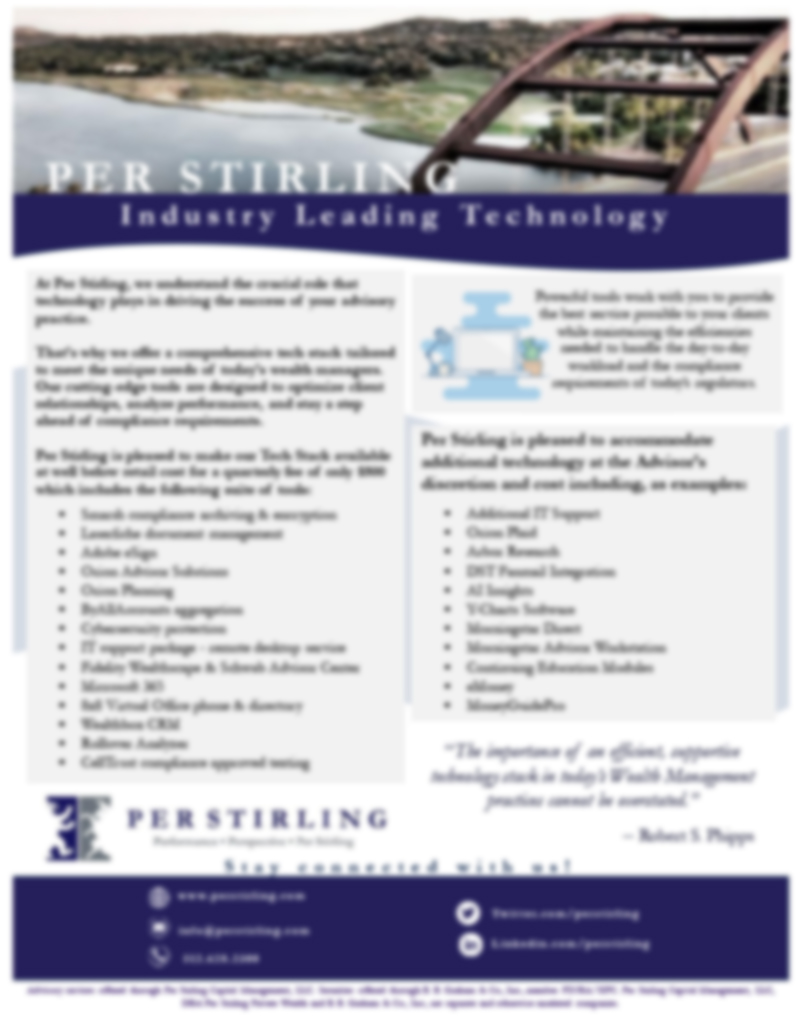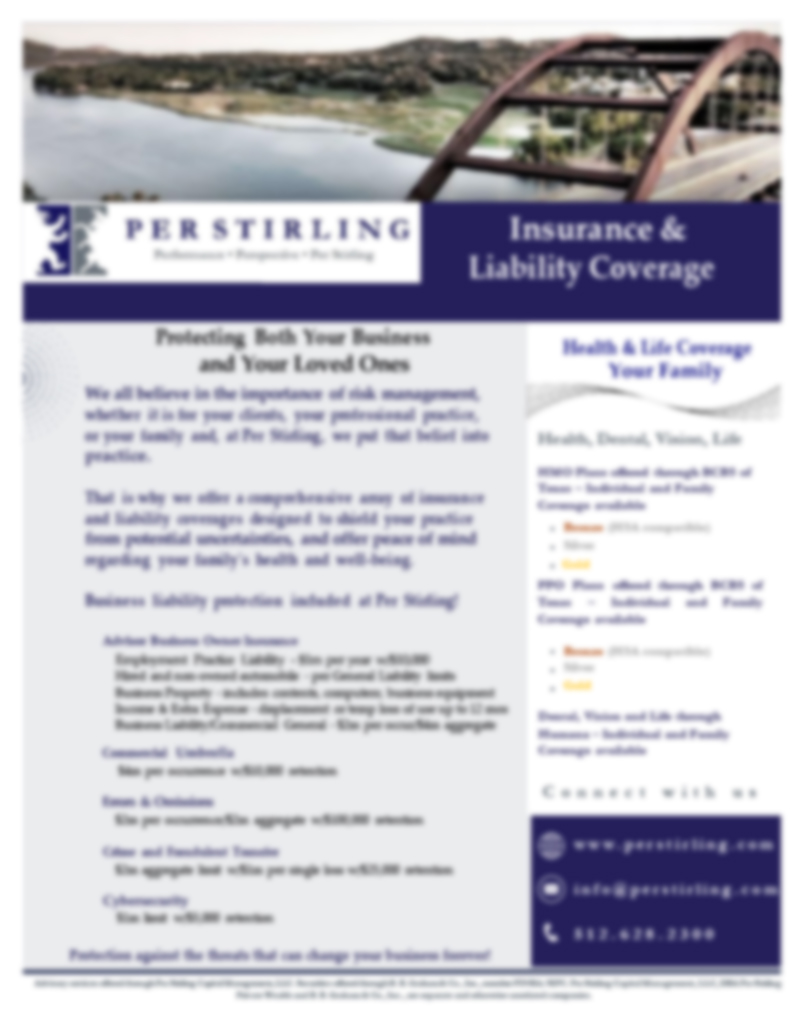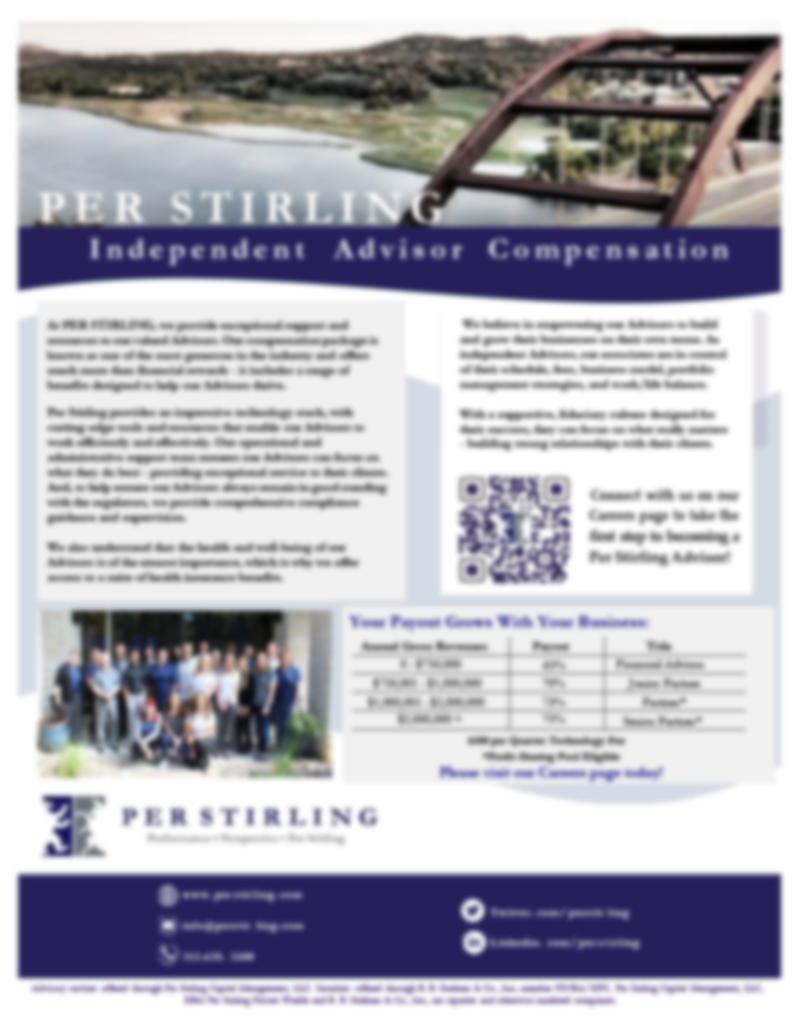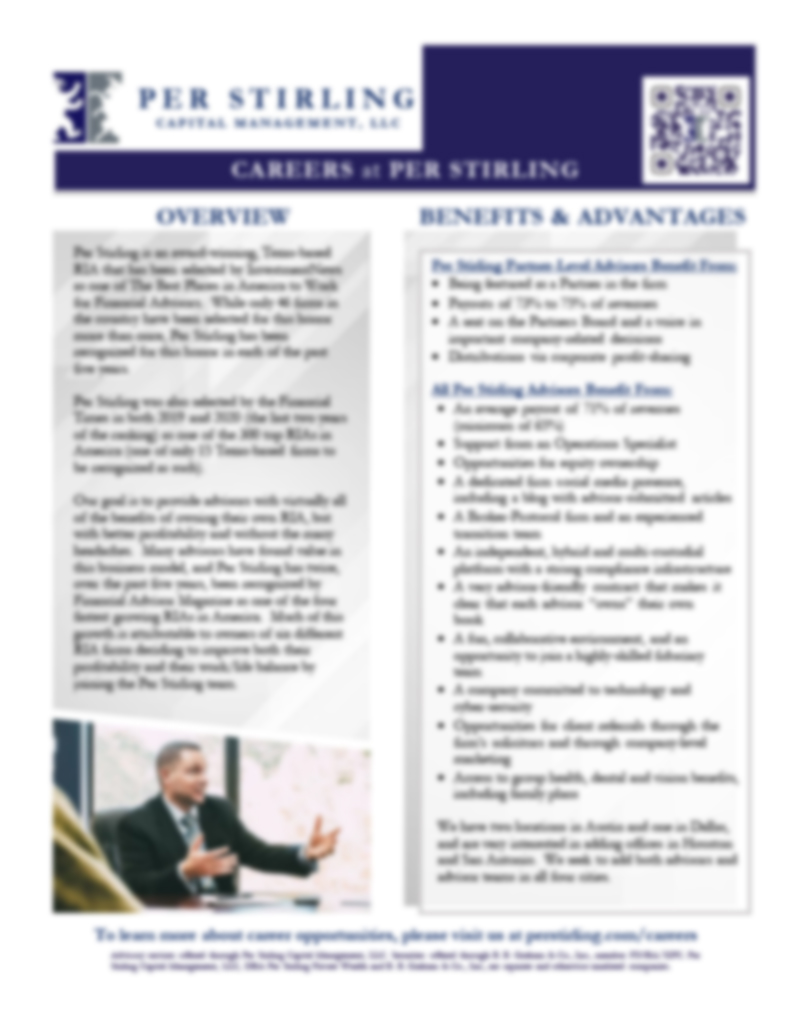06
November2016 Inflation-Adjusted Tax Changes You Need to Know
This post comes from Per Stirling Partner and Financial Advisor, Kenneth Price, CFP®, CFA®, AEP®, CLU®, ChFC®.
The Internal Revenue Service recently announced inflation-adjusted items for 2016.
The top tax bracket of 39.6% will begin at taxable income over $466,950 for married individuals filing jointly (over $415,050 for single filing status). The changes between the levels for this year and next year amount to a 0.45% increase. There still exists an approximately $53,000 difference between the 35% and 39.6% brackets—a difference of more than 4% that could potentially be taken care of by some tax-efficient investing or other means, if you are near the taxable income for that top bracket.
The standard deductions are not increasing like the marginal tax brackets are. However, the limitation on itemized deductions is increasing approximately 2% across all tax filing statuses. Remember that once your adjusted gross income (AGI) exceeds $305,050 if married filing jointly ($311,300 in 2016) or $254,200 if single ($259,400 in 2016), up to 20% of your itemized deductions could be reduced. Continue to consult with your tax preparer or specialist to see if this warrants making any changes to the timing or structure of expenditures that can be itemized. As an example, if your itemized deductions are close to the standard deduction, it may be worth alternating years of taking the standard deduction and itemizing the next by doubling up on property taxes.
The personal exemption amounts increase by $50 to $4,050 in 2016 for those not in the top two brackets (phase-outs exist for the higher brackets).
The maximum qualified long term care premiums eligible for deductions increase by $10 to $120 per year, depending on your age. For those who are over 70 at the end of 2016, the limit will be $4,870 ($4,750 currently). This is perhaps the biggest inflation adjustment at 2.52%.
For U.S. citizens living abroad, the Foreign Earned Income Exclusion increases from $100,800 for 2015 to $101,300 for 2016.
The basic exclusion amount for estate planning purposes will increase by $20,000 to $5,450,000 for 2016, while the annual exclusion for gifts will remain at $14,000. You can make tax-free gifts up to $148,000 for 2016 (up from $145,000 for 2015) to a spouse who is not a U.S. citizen… I should say, to your spouse who is not a U.S. citizen. You can still make direct payments to medical or educational institutions in any amount without those payments being considered a taxable gift.
Although the IRS has made inflation adjustments, the Social Security Administration has decided there will not be a cost-of-living adjustment for 2016 for retirement benefits, but that’s another topic for another time.
This material has been written for informational purposes only, and is not intended to provide, and should not be relied on for, tax, legal or accounting advice. You should consult your own tax, legal and accounting advisors before engaging in any transaction.
20152016adjusted gross incomeAGIdeductionsestate planningexclusiongift taxinflationInternal Revenue ServiceIRSlong term carepersonal exemptionspremiumssocial securitytaxtax bracketU.S. citizen




